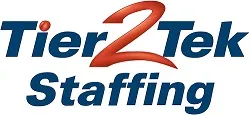Technical Writer Interview Questions with Answers

As hiring managers and job seekers exploring the role of a Technical Writer, it’s crucial to understand the depth and breadth of knowledge required for this position. Technical Writers must not only have a strong grasp of language and documentation tools but also understand complex technical concepts to communicate effectively across various audiences. The following interview questions are designed to help assess the expertise and suitability of candidates for the role of a Technical Writer.
What is technical writing and how does it differ from other types of writing?
Technical writing involves creating clear and concise documentation for technical processes, products, or services. It differs from other types of writing by focusing on clarity, accuracy, and utility to assist users in understanding and using a product or service effectively.
Can you describe the key qualities of an effective technical document?
An effective technical document is clear, accurate, concise, accessible, and task-oriented. It should be well-organized with logical flow and must address the needs of its target audience.
What tools and software are you proficient in for technical writing?
Proficiency in tools like Microsoft Word, Adobe FrameMaker, MadCap Flare, and content management systems (CMS) is common. Knowledge of version control tools like Git and graphics tools like Adobe Photoshop can also be beneficial.
How do you ensure technical accuracy in your documents?
Ensuring technical accuracy involves thorough research, collaboration with subject matter experts (SMEs), and regular revisions. Utilizing peer reviews and feedback is also crucial.
What is your approach to managing multiple documentation projects simultaneously?
Effective time management, prioritization, and use of project management tools like JIRA or Trello help in managing multiple projects. Clear communication with stakeholders to set realistic deadlines is also key.
How do you tailor your writing for different audiences?
Understanding the audience’s technical knowledge and needs allows tailoring content accordingly. This might include varying the language complexity, depth of detail, and use of technical jargon.
What are API documentation and its importance?
API documentation provides instructions on how to effectively use and integrate with an API. It is crucial for developers and must be accurate, complete, and clear to facilitate ease of use and integration.
Describe your process for updating documentation after product changes.
The process involves reviewing the changes with developers, updating the relevant sections of the documentation, and ensuring consistency across the entire document. Frequent communication with the product team is essential.
How do you handle tight deadlines in technical writing?
Handling tight deadlines requires efficient planning, setting clear priorities, and sometimes delegating tasks. Keeping a buffer time for unexpected delays and revisions is also a strategy.
What strategies do you use for document layout and design?
Effective strategies include using headings, bullet points, and tables for better readability. Incorporating diagrams, screenshots, and other visual aids also helps in enhancing understanding.
Explain the significance of a document management system in technical writing.
A document management system helps in organizing, storing, and tracking changes to documents. It facilitates collaboration among team members and maintains version control.
How do you ensure your documents are user-friendly?
User-friendliness is ensured by using simple language, active voice, and a logical structure. Testing the document with a segment of the target audience can provide valuable feedback for improvements.
What role does proofreading play in technical writing?
Proofreading is essential to ensure there are no grammatical, typographical, or factual errors. It helps in maintaining the professionalism and credibility of the documentation.
How do you incorporate SEO into your technical writing?
Incorporating SEO involves using relevant keywords, optimizing titles and headers, and ensuring the content is accessible and engaging to boost its visibility on search engines.
What methods do you use to gather information for your documents?
Information gathering methods include interviewing SMEs, reviewing existing documentation, and conducting hands-on testing of the product or service. Participating in product development meetings can also provide insights.
Discuss the importance of collaboration in technical writing.
Collaboration with SMEs, developers, and other stakeholders is crucial to ensure the accuracy and completeness of documents. It helps in gaining different perspectives and enhancing the quality of the content.
How do you measure the effectiveness of your technical documents?
Effectiveness can be measured through user feedback, analytics on the document usage, and direct observation of user interaction with the product. Regular updates and revisions are made based on these insights.
What is your experience with technical writing in agile environments?
Experience in agile environments typically involves rapid iterations of document drafts, flexibility in handling changes, and close collaboration with the development team.
How do you decide what content goes into a user guide versus a technical specification?
User guides are user-oriented and focus on guiding the user through tasks, while technical specifications are detailed descriptions aimed at developers or technicians for understanding the product’s technical aspects.
What challenges have you faced in technical writing and how did you overcome them?
Common challenges include dealing with complex information, tight deadlines, and varying user requirements. Overcoming these challenges involves continuous learning, effective communication, and adapting processes as needed.
How do you handle feedback on your documentation?
Feedback is welcomed and used constructively to improve document quality. It involves assessing the feedback, making necessary revisions, and continuously improving the documentation process.
Describe a project where you had to document a product without prior knowledge of the technology.
This situation requires extensive research and reliance on SMEs to understand the technology. Breaking down information into manageable parts and frequent validation with experts ensures accuracy and clarity.
How do you maintain consistency across multiple documents?
Maintaining consistency involves adhering to a style guide, using template-based structures, and regular reviews to ensure all documents align in tone, style, and format.
What is the role of visuals in technical documentation?
Visuals play a critical role in enhancing comprehension, breaking down complex information, and providing an easy reference that complements the written content.
How do you handle sensitive or confidential information in your documents?
Handling sensitive information involves adhering to legal and ethical guidelines, using document access controls, and ensuring that sensitive data is properly secured and disclosed only as necessary.
What are your strategies for maintaining document security?
Strategies include using encrypted storage, access controls, and regular audits to ensure that documents are protected from unauthorized access and potential breaches.
How do you ensure compliance with industry standards in your documentation?
Ensuring compliance involves staying updated with industry regulations, regularly reviewing standards, and incorporating required changes into the documentation process.
Can you explain the difference between user documentation and system documentation?
User documentation is designed for end-users and focuses on how to use the product, while system documentation is aimed at system administrators or developers and focuses on how the system works internally.
How do you prioritize tasks when working on multiple documentation projects?
Prioritization involves evaluating the impact, deadlines, and dependencies of each project. Using prioritization matrices and aligning with team goals helps in managing workload effectively.
Common Technologies Used by Technical Writers

Technical Writers utilize a variety of technologies to create, manage, and publish documentation effectively. Here are some of the most common ones:
- Authoring Tools: Software like Adobe FrameMaker, MadCap Flare, and Microsoft Word are staples for creating and formatting documents.
- Content Management Systems (CMS): Systems like WordPress, Drupal, and Joomla help manage digital content and are essential for handling large volumes of documents.
- Version Control Systems: Tools like Git and Subversion allow Technical Writers to keep track of changes to documents and collaborate with others.
- Help Authoring Tools (HATs): Software such as RoboHelp and HelpStudio enable the creation of help files and manuals that are integrated into software applications.
- Graphic Design Software: Applications like Adobe Photoshop and Illustrator are used to create and edit visual content that complements textual documentation.
- Screen Capture Tools: Tools like Snagit and Camtasia are crucial for capturing screenshots or creating video tutorials, which are often part of technical documentation.
- Document Collaboration Tools: Google Docs and Microsoft SharePoint facilitate real-time collaboration across teams, essential in agile environments.
- API Documentation Tools: Swagger and Postman are popular for creating and testing API documentation, crucial for technical audiences.
- Localization and Translation Management Tools: Software like SDL Trados and MemoQ help ensure that documents can be accurately translated and localized for different regions.
Key Expertise Areas for Technical Writers
Technical Writers require a diverse set of skills to excel in their roles. Here are some common areas of expertise they often utilize:
- Technical Proficiency: Understanding complex technical concepts and being able to explain them in a simple, clear manner is essential.
- Writing and Grammar: Strong command of the language with an ability to write in a concise, accessible, and error-free manner.
- Research Skills: Ability to gather information from various sources, including interviews with subject matter experts and technical documentation.
- Documentation Tools Proficiency: Knowledge of industry-standard writing and publishing tools is crucial for efficient document creation and management.
- Attention to Detail: Precision is key in technical writing, as inaccuracies can lead to confusion or misinterpretation of the information.
- Project Management: Skills in managing timelines, resources, and project scopes are important, especially when handling multiple projects.
- User-Centered Design: Understanding of how to design documents that meet the needs of specific audiences, including using appropriate layouts, formats, and visual aids.
- Adaptability and Flexibility: Ability to adapt writing style and content based on changing technologies, project requirements, and audience needs.
- Collaborative Skills: Working effectively with cross-functional teams, including developers, designers, product managers, and other stakeholders.
- Technical SEO Knowledge: Understanding of how to optimize content for search engines to increase the visibility and reach of online documentation.
Need to Hire a Technical Writer?

At Tier2Tek Staffing, we specialize in quickly connecting you with top-tier Technical Writers who can streamline and enhance your documentation processes.
